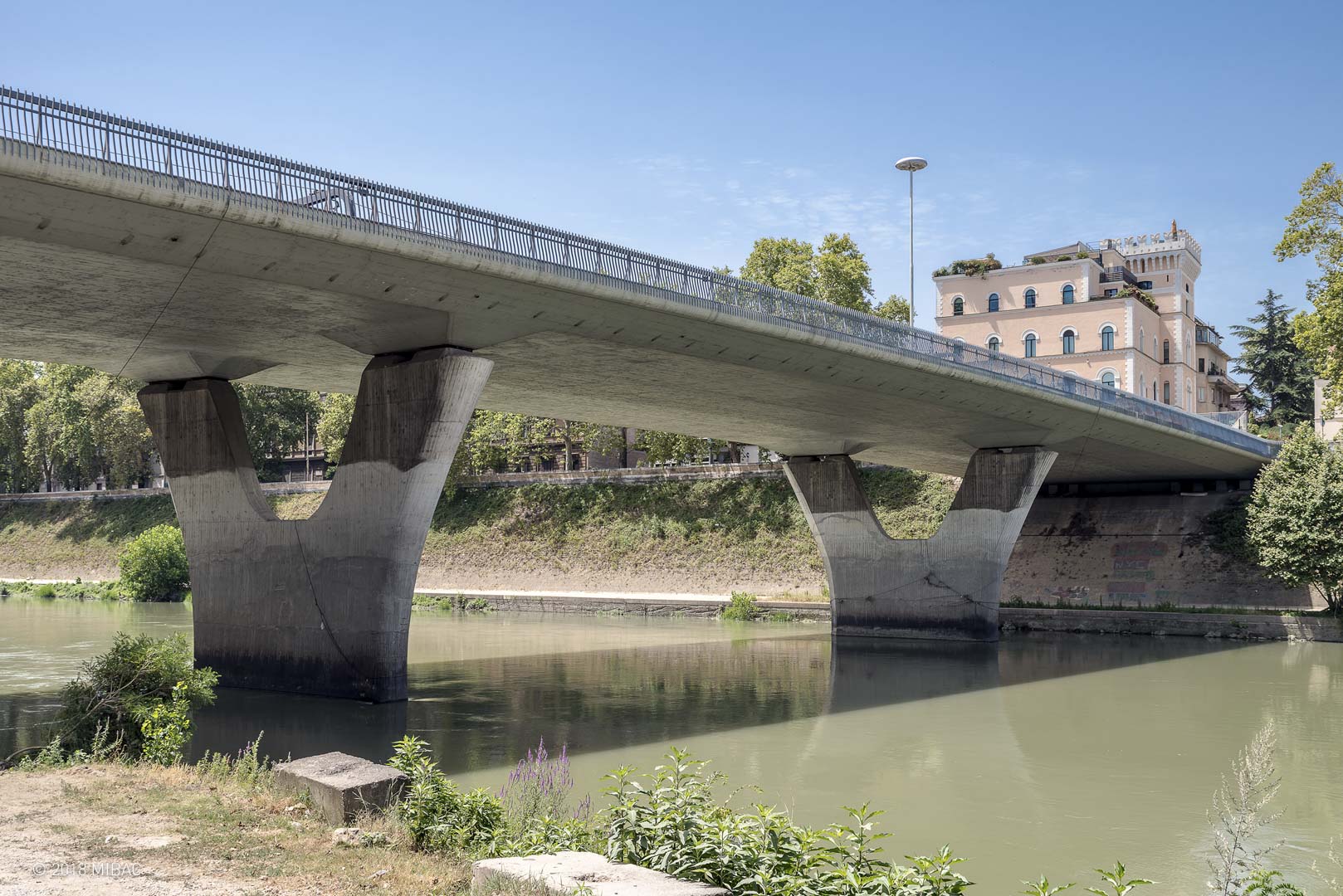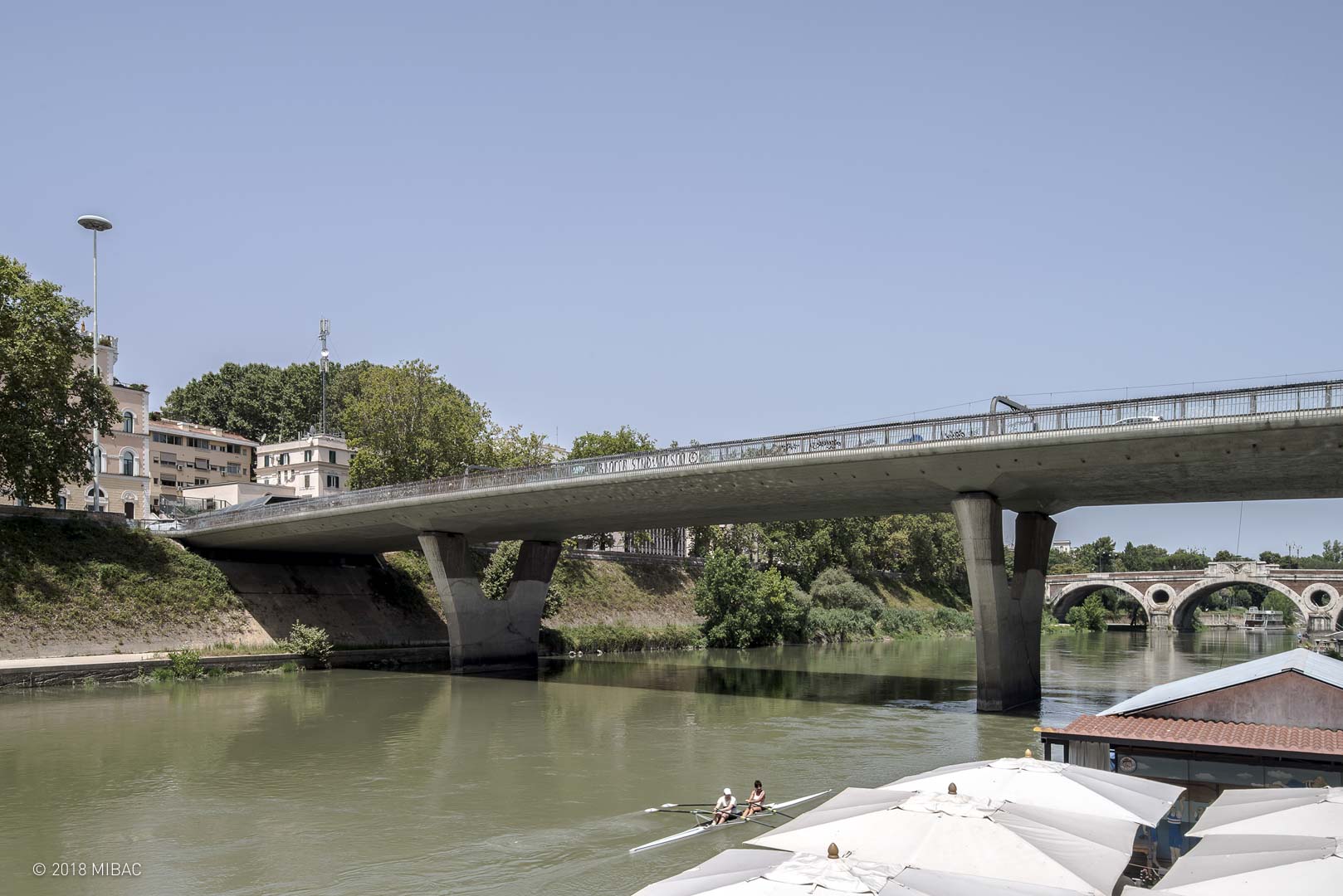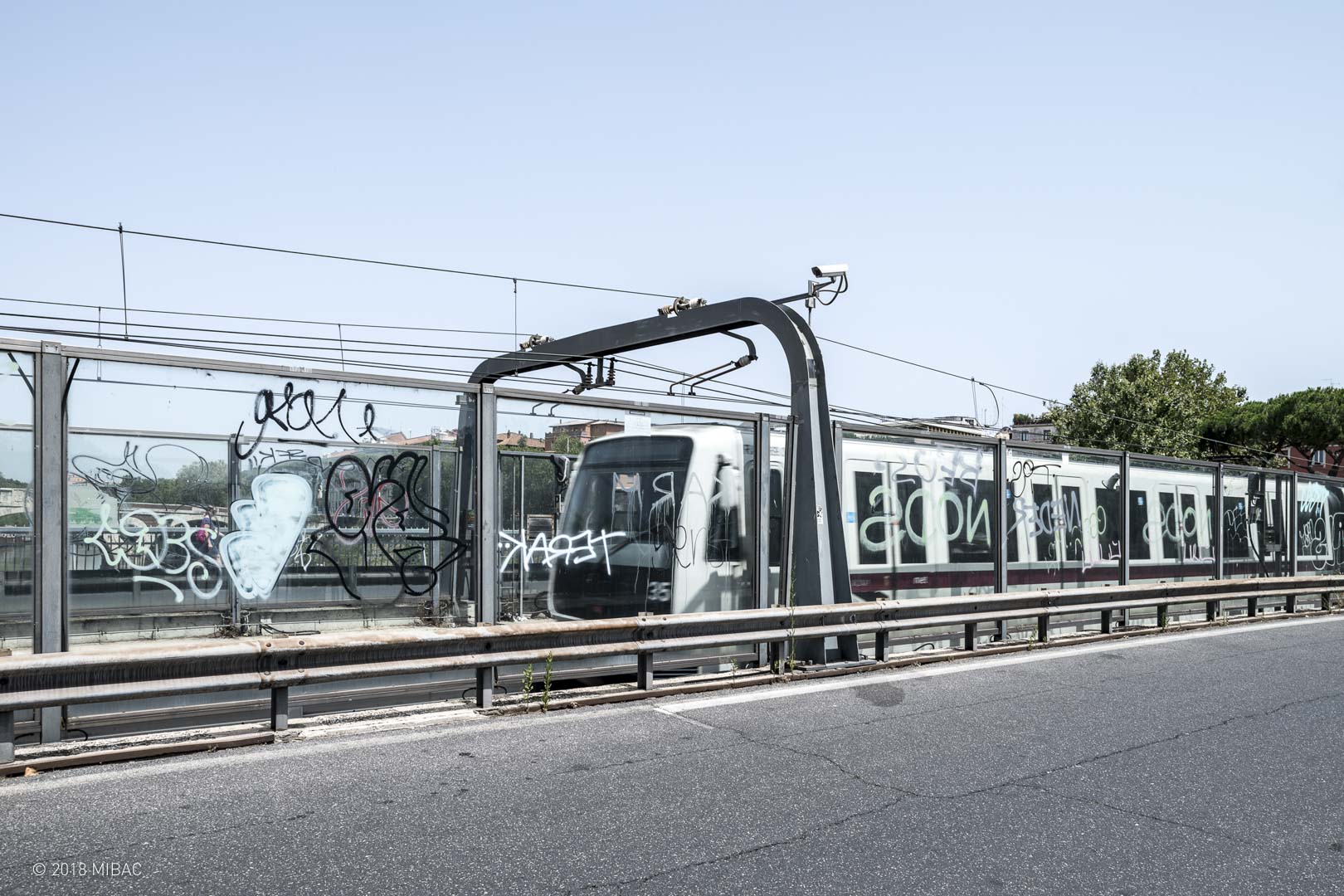Place: Rome, Lungotevere Arnaldo da Brescia, Lungotevere Michelangelo
Authors: Silvano Zorzi, Luigi Moretti; Aldo Müller, Pietro Piscitelli (collaborators)
Chronology: 1964 | 1976
Itinerary: An hard-working country
Use: Urban bridge

Designed to solve the passage of the Metro from one side of the Tiber to the other, the Pietro Nenni bridge (named after the socialist statesman who died shortly before its inauguration) is the result of the collaboration of one of the most innovative Italian structuralists, Silvano Zorzi, and one of the greatest architects of Italy’s recent history, Luigi Moretti. To Zorzi we owe the bridge’s static design, and to Moretti the study of the shapes and the finishing of the forms. Far from a reductive task, the division of skills turned out to be a very effective principle: each of the two engineers was free to contribute in the sphere of his knowledge, completing a work of great structural simplicity.

The bridge was designed starting in 1964. Before then, a design had been requested for an underground connection between the two banks of the Tiber, subsequently discarded due to the land’s geological nature. Zorzi and Moretti proposed a solution that uses prestressed technology, which allowed keeping the sections extremely thin.

The bridge is supported by two open-faced reinforced concrete “V” piles. The surface treatment is extremely careful, with particular attention to the construction of the formworks and the fluidifier used to delay the setting.

Luigi Moretti’s refinement of the design imprinted on the structure shows in the shapes of the piles’ edges and in the taut deck section.

The Zorzi-Moretti design finds a brilliant solution to integrate vehicular traffic with the passage of the subway trains: the bed of the underground tracks is slightly lowered compared to the roadway, preventing the metro vehicles from being too visible from the private vehicles running along the side lanes.

The front view gives an image of great linearity. From this point of view the bridge appears extremely thin, losing the perception of the concrete piles’ mass.

